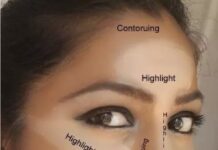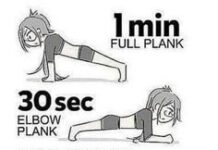Equipped with the right applications, a computer can be of great help in virtually any domain of activity. When it comes to designing and precision, no other tool is as accurate as a computer. Moreover, specialized applications such as AutoCAD give you the possibility to design nearly anything ranging from art, to complex mechanical parts or even buildings.
Suitable for business environments and experienced users
After a decent amount of time spent installing the application on your system, you are ready to fire it up. Thanks to the office suite like interface, all of its features are cleverly organized in categories. At a first look, it looks easy enough to use, but the abundance of features it comes equipped with leaves room for second thoughts.
Create 2D and 3D objects
You can make use of basic geometrical shapes to define your objects, as well as draw custom ones. Needless to say that you can take advantage of a multitude of tools that aim to enhance precision. A grid can be enabled so that you can easily snap elements, as well as adding anchor points to fully customize shapes.
With a little imagination and patience on your behalf, nearly anything can be achieved. Available tools allow you to create 3D objects from scratch and have them fully enhanced with high-quality textures. A powerful navigation pane is put at your disposal so that you can carefully position the camera to get a clearer view of the area of interest.
Various export possibilities
Similar to a modern web browser, each project is displayed in its own tab. This comes in handy, especially for comparison views. Moreover, layouts and layers also play important roles, as it makes objects handling a little easier.
Sine the application is not the easiest to carry around, requiring a slightly sophisticated machine to properly run, there are several export options put at your disposal so that the projects itself can be moved around.
Aside from the application specific format, you can save as an image file of multiple types, PDF, FBX and a few more. Additionally, it can be sent via email, directly printed out on a sheet of paper, or even sent to a 3D printing service, if available.
To end with
All in all, AutoCAD remains one of the top applications used by professionals to achieve great precision with projects of nearly any type. It encourages usage with incredible offers for student licenses so you get acquainted with its abundance of features early on. A lot can be said about what it can and can't do, but the true surprise lies in discovering it step-by-step.
AutoCAD 22.0 Crack+
Technical Overview
The two major AutoCAD components are the AutoCAD drawing area, which displays a two-dimensional drawing, and the ribbon user interface, which displays the editing tools necessary to make the drawing.
Creating a drawing begins with the placement of a three-dimensional (3D) model of your drawing area. For most 2D drawings, the model’s surface is a sheet of paper with a flat 2D drawing area. However, the AutoCAD software permits a drawing area that is a 3D object. In this type of drawing, a 3D model is used as a “paper model.”
You then create a drawing by constructing and placing objects within the model’s drawing area. Objects include lines, circles, arcs, text, freehand shapes, dimensions, crosshairs, and three-dimensional (3D) models. For 2D drawings, you also add text, crosshairs, dimensions, annotations, and so on.
AutoCAD’s 3D models are essentially two-dimensional drawings viewed from different angles or at different distances. For example, if you use a planar wireframe model, you see the model as a collection of parallel straight lines. If you use a perspective wireframe model, you see the model as a three-dimensional object from a particular angle, such as looking down on the model.
When you create a drawing, you enter commands in the ribbon user interface (RIBUI).
The AutoCAD command set consists of three kinds of commands: drawing commands, command-line commands, and some other commands.
Creating a Drawing
A major task when you first create a drawing is to define the drawing area. In previous versions of AutoCAD, the drawing area was defined as a two-dimensional (2D) sheet of paper, as shown in Figure 1. (In the current release, the drawing area can be defined in 3D.)
Figure 1. A two-dimensional sheet of paper, such as an architectural drawing, is used to create most 2D drawings.
The drawing area is the entire drawing space—the space within which you place objects. By default, you do not define a drawing area. When you create a new drawing, the software sets the drawing area to a default drawing space that is the size of the paper sheet. In the current release, you must resize the drawing area to any predefined size by first
AutoCAD 22.0 X64
Conceptual 3D models are created using the conceptual modeling tool DWGstar and then translated into 2D geometry and converted to the file format of the program used for further manipulation.
AutoCAD has a multi-platform graphical user interface.
It runs on Microsoft Windows, Linux, Mac OS X and Unix and as a standalone application on Microsoft Windows.
Keyboard shortcuts
The application has a number of shortcuts that may be customized. Two of the most commonly used are Ctrl+Shift+L and Ctrl+Shift+Y. The last is an inverted copy, and is used to set the Y coordinate to the last placed point.
AutoCAD 2009 added a new arrow button to the toolbar, which can be used to select a point on an object or move the cursor.
Use in design and drafting
The basic building blocks used in AutoCAD are lines, arcs, circles, polylines, splines, text, table, and blocks. AutoCAD is used to draw, and manipulate the data of AutoCAD drawings. It is used to create technical drawings, master plans, architectural designs, or decorative models. It can be used by architects, engineers, quantity surveyors, home designers, artists, and carpenters.
Editing
AutoCAD offers features for drafting and creating technical drawings. This is part of the next step after the creation of a technical drawing. This includes creating, modifying, deleting, and arranging blocks, lines, polylines, and arcs. It also includes editing attributes such as the angle of arcs and circles, and the size and shape of dimensions.
Other important editing features are the ability to change the origin point and origin axes of a drawing, and the change of coordinate systems. For example, it can be converted from a global to a local coordinate system, or from a planar to a cylindrical coordinate system.
Special drawing tools include the ability to sketch with paths, create sketches with polylines and text, extrude and cut, bend, and mirror lines, arcs and curves.
The main draw tools include the ability to place, move, rotate, and scale text and lines. It also has features for creating, editing, and managing annotation layers. These include an image overlay, a tag and annotation text, 3D objects, and an image group.
It also has drawing tools that can save drawing files in the Portable Network Graphics (PNG) and Joint
5b5f913d15
AutoCAD 22.0 Crack+ Full Version
How to use the Crack :
1. Install the patch 2.unpack the.zip or anycrack software3.open the autocad serialnumber.exe and enter your license key when asked for or leave as is 4.install the patches and enjoy the crack works 5.If you run into any issues please contact me or do not hesitate to ask for help.Q:
Calling get() from singleton in Groovy
Is it possible to call get() in Groovy singleton?
A:
A call to get() will return a reference to an object that has been created by the singleton. It does not return the actual value of the variable in the singleton class.
It is normal to have a getter in a singleton class. If you want to get the actual value of the variable, simply call the setter instead:
import groovy.util.GroovyTestCase
class MySingleton extends GroovyObject{
static MySingleton singletonInstance
String getName(){
def result = singletonInstance.getName()
if(result == null){
throw new RuntimeException(“TODO”)
}
return result
}
void setName(String newName){
newName
}
}
class MyTest extends GroovyTestCase {
void test(){
assert new MySingleton().getName() == ‘foo’
}
}
UNPUBLISHED
UNITED STATES COURT OF APPEALS
FOR THE FOURTH CIRCUIT
No. 12-7320
LIONEL AN
What’s New in the?
Rapidly send and incorporate feedback into your designs. Import feedback from printed paper or PDFs and add changes to your drawings automatically, without additional drawing steps. (video: 1:15 min.)
Diagram Mapping for Thematic & Attribute Modeling:
The theme and attribute models in the new design environment can be combined in a new way to create Diagram Mapping. This can be a powerful tool for creating architectural blueprints or schematic diagrams. This feature is useful in many cases for creating the documentation for AutoCAD. (video: 3:15 min.)
The theme and attribute models in the new design environment can be combined in a new way to create Diagram Mapping. This can be a powerful tool for creating architectural blueprints or schematic diagrams. This feature is useful in many cases for creating the documentation for AutoCAD. (video: 3:15 min.)
Simplified User Interface:
The new design environment simplifies the user interface and encourages the use of a more streamlined workflow, with a clean and uncluttered display. The new user interface is based on a more familiar approach to using the tools. (video: 1:12 min.)
The new design environment simplifies the user interface and encourages the use of a more streamlined workflow, with a clean and uncluttered display. The new user interface is based on a more familiar approach to using the tools. (video: 1:12 min.)
Linked Modeling:
In the new design environment, you can create, edit, and view design elements linked to a previously created file, such as a draft or floor plan. This saves time and helps you keep track of changes. With the new Linked Modeling, you can make changes in your linked drawing while you continue to edit the original, linked drawing. This is possible by dynamically previewing the changes and even testing them while you work. This means that you are less likely to make mistakes, since you are looking at the changes in a view that is as close as possible to the view of the original drawing. (video: 1:30 min.)
In the new design environment, you can create, edit, and view design elements linked to a previously created file, such as a draft or floor plan. This saves time and helps you keep track of changes. With the new Linked Modeling, you can make changes in your linked drawing while you continue to edit the original,
System Requirements:
OS: Windows 7, 8, 8.1, 10 (64-bit versions only)
Windows 7, 8, 8.1, 10 (64-bit versions only) Processor: Intel Core i3 or equivalent
Intel Core i3 or equivalent Memory: 4GB RAM
4GB RAM Graphics: 1GB of video memory
1GB of video memory DirectX: Version 9.0c
Version 9.0c Storage: At least 33 GB available space
(Full version available to play on Steam)
How To Install:
https://secure-ridge-82167.herokuapp.com/leihart.pdf
https://social.arpaclick.com/upload/files/2022/06/VhtzNldgjsaFmSgaggh1_07_a2e799077da77b37617d39dd199e6658_file.pdf
https://berlin-property-partner.com/?p=16708
https://telebook.app/upload/files/2022/06/Tyi5wWKTWMpoNeQo7Qst_07_42603158191ff4ae165214a8ecd6bce6_file.pdf
https://squalefishing.com/advert/autocad-with-full-keygen-free-2022-new/
https://toptenwildlife.com/wp-content/uploads/2022/06/AutoCAD-7.pdf
http://saddlebrand.com/?p=4801
https://fortworth-dental.com/wp-content/uploads/2022/06/AutoCAD-2.pdf
https://pianoetrade.com/wp-content/uploads/2022/06/AutoCAD-7.pdf
https://www.dominionphone.com/autocad-torrent-free-download-updated-2022/
http://med-smi.com/?p=1
https://guarded-ravine-35077.herokuapp.com/AutoCAD.pdf
https://mentorus.pl/wp-content/uploads/2022/06/ordzebu.pdf
https://delicatica.ru/wp-content/uploads/2022/06/AutoCAD-9.pdf
https://dev.izyflex.com/advert/autocad-crack-product-key-full-for-windows-latest-2022/
https://www.lichenportal.org/chlal/checklists/checklist.php?clid=14695
http://www.hva-concept.com/autocad-crack-6/
https://zolli.store/wp-content/uploads/2022/06/cahlgarr.pdf
https://sltechraq.com/autocad-activation-code-with-keygen/
https://efekt-metal.pl/witaj-swiecie/











































